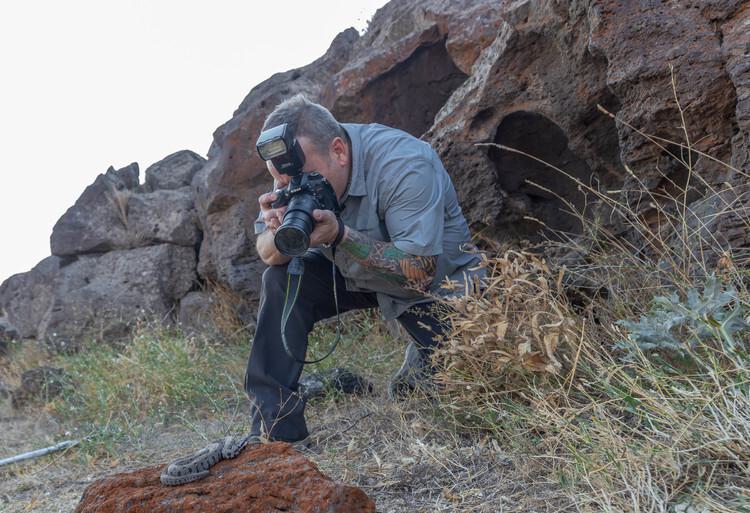
Zoological Manager of Herpetology Mark Wanner photographs an Armenian viper. Credit: Saint Louis Zoo
The Saint Louis Zoo WildCare Institute Center for Conservation in Western Asia has been conducting field research in the country of Armenia for over a decade. In September 2021, herpetology staff at the Zoo traveled to Armenia to conduct field research on endangered reptiles. Keeper Justin Elden documented the trip, and readers are invited to learn more about this international conservation effort in Elden’s own words (and photos) below!
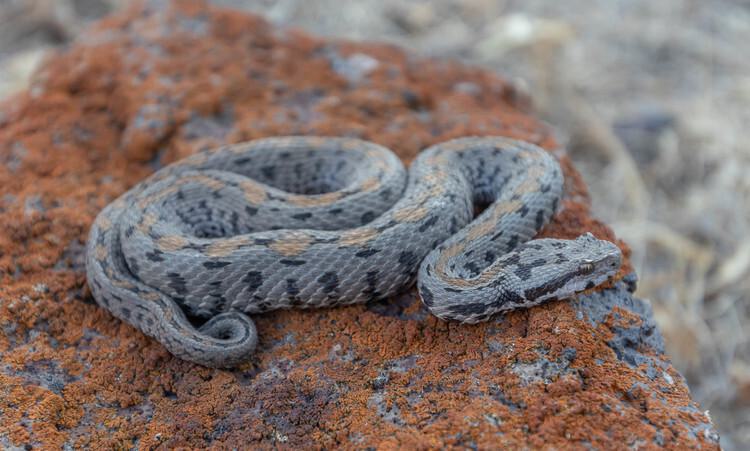
An adult Armenian viper (Montivipera raddei). Credit: Saint Louis Zoo
Notes From the Field: The Armenian Viper
The Center for Conservation in Western Asia studies a number of animals, including the Armenian viper, a species whose numbers have declined drastically over the last few decades due to habitat destruction and over collection. Autumn is a good time to carry out research in this region as the snakes move towards their rocky winter dens coinciding with cooler weather. This makes it easier for Zoo researchers to locate snakes on the move and collect information about their populations. Though the climate was hotter and drier than expected, our herpetology staff were able to find enough vipers and other reptile species to add valuable data to a long term population monitoring study in an area outside the country’s capital of Yerevan. This area is currently not protected as a nature preserve. The Zoo and our Armenian colleagues want to bring formal protections to this site to ensure the Armenian vipers and other species are further protected, and collecting data on these endangered snakes is crucial to that effort.
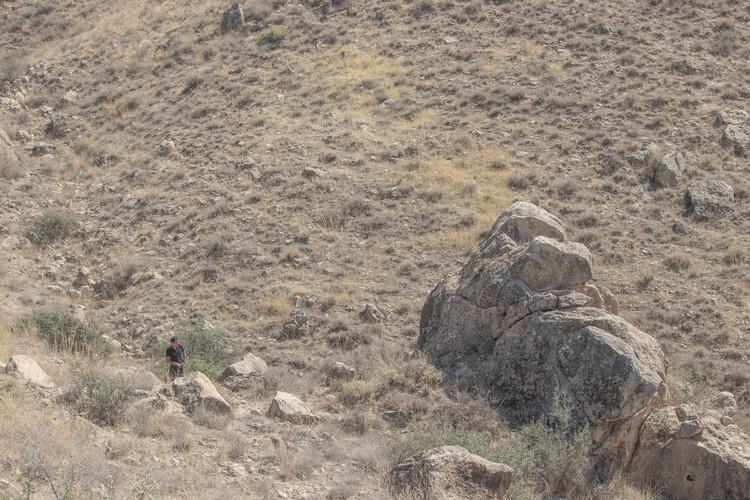
Armenian herpetologist assessing the vast and dry habitat or Goravan Sands. Credit: Saint Louis Zoo
Notes From the Field: Surveying in Goravan Sands
The WildCare Institute and our international partners are dedicated to the conservation of wild animals and wild places all over the world, including the obscure Pleske's racerunner lizard of Armenia. During this trip, herpetology staff supported surveys in a unique nature preserve, Goravan Sands, by helping local colleagues locate and photograph this endangered species.
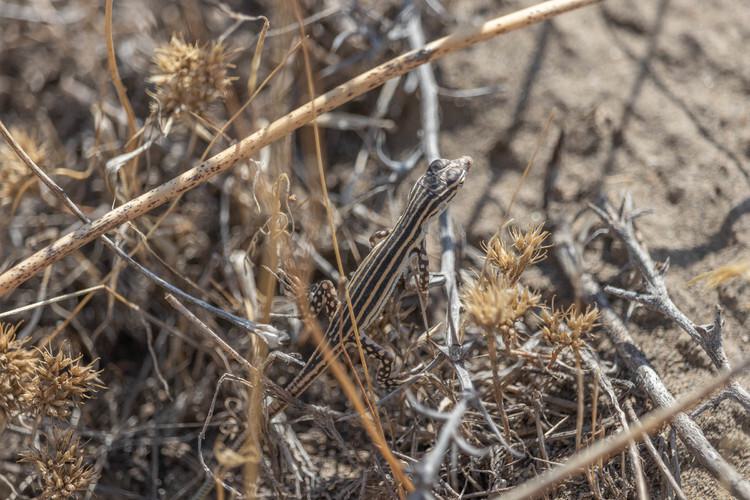
The critically endangered Pleske's racerunner lizard (Eremias pleskei). Credit: Saint Louis Zoo
Goravan Sands is a preserve of 95 hectares and has many endemic species of plant and animal that need its rocky and sandy habitat to survive. The Pleske's racerunner lizard is a critically endangered species and threatened by habitat destruction. It is only found in rocky, dry, undisturbed habitats in western Asia. During the surveys, numerous lizards were found and documented, leading our colleagues to believe the population is benefiting from the increased protection to their habitat that has been provided by the Armenian government and our in-country colleagues.
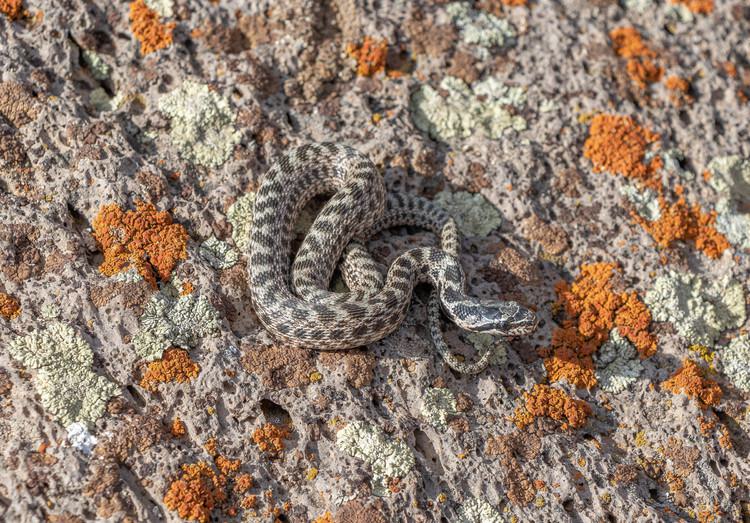
One of nine Caucasus blotched rat snakes (Elaphe sauromates) captive bred in Armenia and released into the wild by Zoo staff and Armenian colleagues. Credit: Saint Louis Zoo
Notes From the Field: Introducing Caucasus Blotched Rat Snakes
The conservation-breeding component of the Center for Conservation in Western Asia takes places at the Zoo’s Armenian Conservation Breeding Center (ACBC) outside of the Armenian capital of Yerevan. Here, our Armenian herpetological collaborators care for and breed endangered species of reptile for release into the wild to bolster native populations. While visiting Armenia this past fall, Zoo staff were able to acquire new animals for the center’s breeding groups as well as help in the release of nine Caucasus blotched rat snakes back into the wild. The ACBC is the first facility of its kind and is a great example of collaborative efforts between the Zoo and our Armenian colleagues.
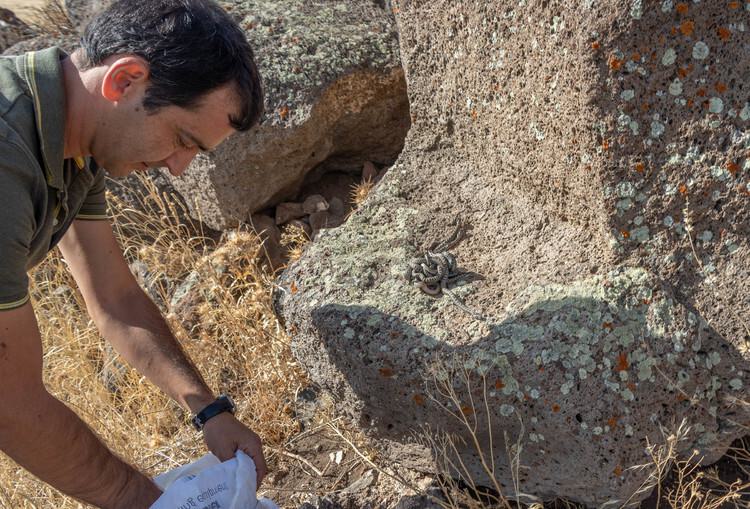
Dr. Levon Aghasyan, Director of the Armenian Conservation Breeding Center, releasing the rat snakes after a last physical. Credit: Saint Louis Zoo
Trips to Armenia, such as this one, are vitally important to the Zoo's dedication to amphibian conservation and to further assess areas in need of support. Reptiles and amphibians play vital roles in ecosystem health, and their survival is wholly dependent on conservation programs like ours. It is a bonus when your flagship species is the beautiful Armenian viper!

